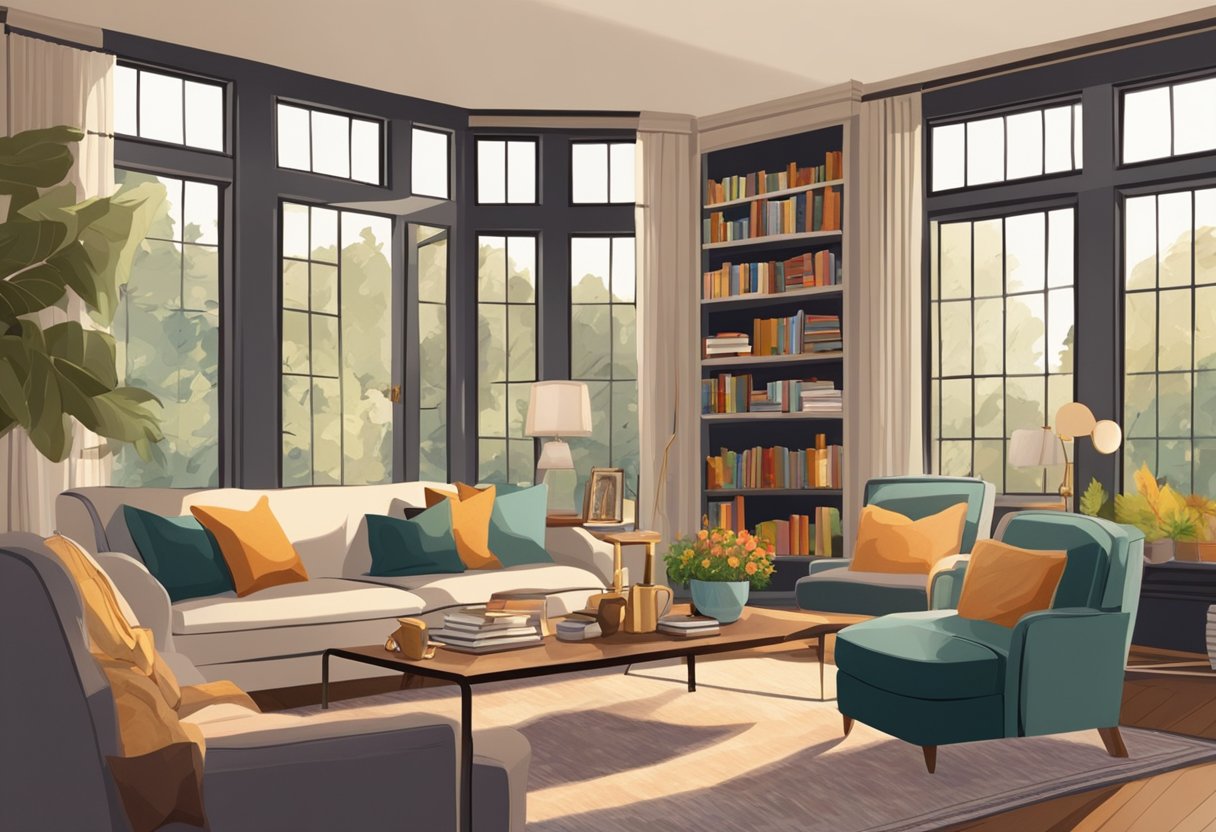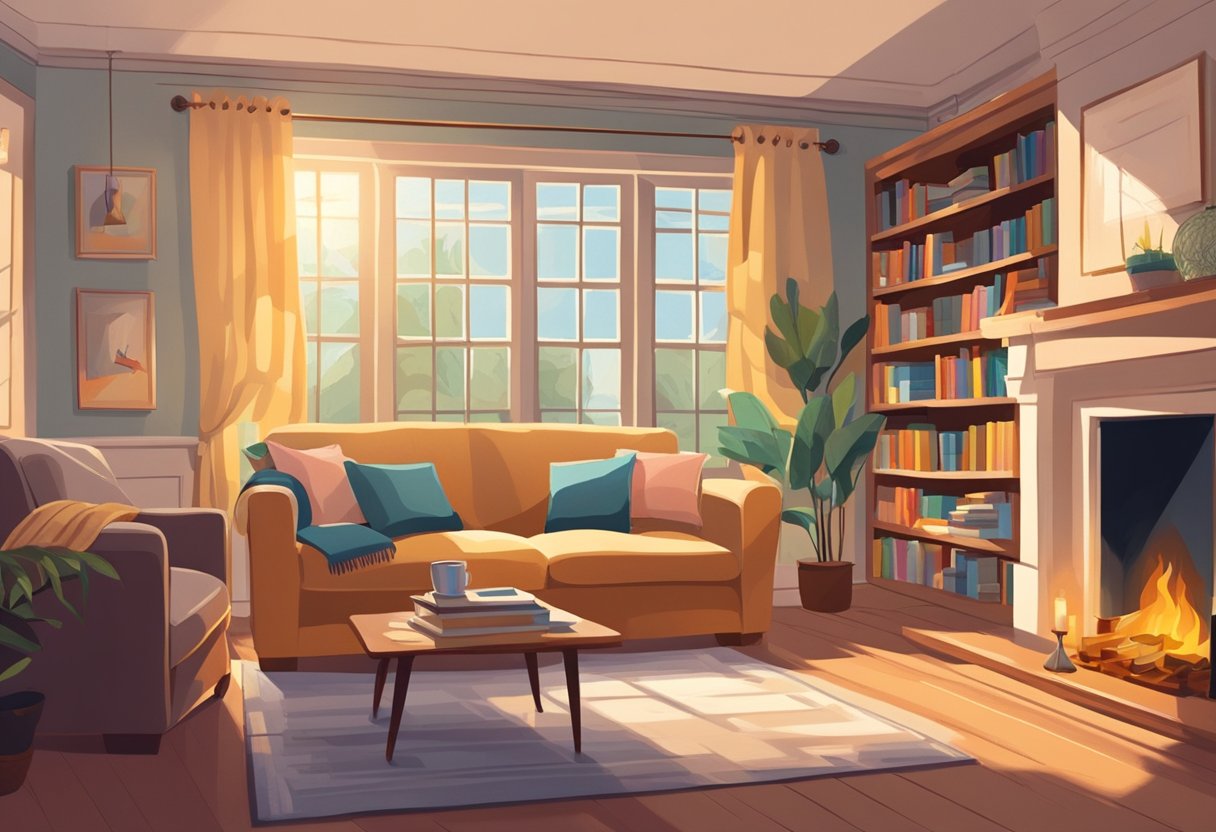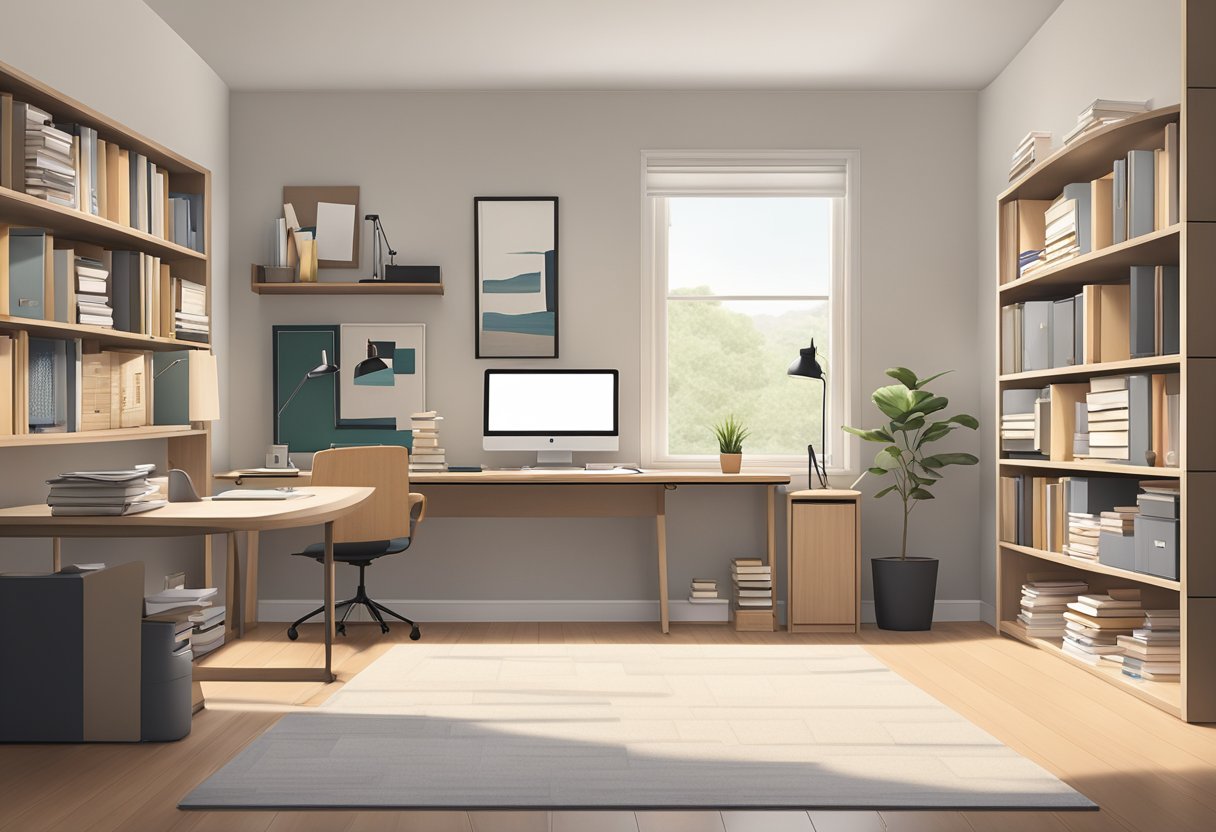Room Interior Design: Transform Your Living Space with These Trendy Tips
Are you looking to give your room a fresh new look? Interior design is the art and science of enhancing the interior of a building to achieve a healthier and more aesthetically pleasing environment for the people using the space. Whether you’re starting from scratch or simply looking to add a few new pieces, interior design can help transform your room into a space that reflects your vision and personality.

Interior design is all about creating a vision for your space and bringing it to life. Design fundamentals such as colour, pattern, and texture are important elements to consider when creating your vision. Room-specific strategies such as lighting, furniture placement, and accessorizing are also key to creating a cohesive and functional space. With the right combination of design fundamentals and room-specific strategies, you can create a space that is not only beautiful but also functional and comfortable.
Key Takeaways
- Interior design is the art and science of enhancing the interior of a building to achieve a healthier and more aesthetically pleasing environment for the people using the space.
- Design fundamentals such as colour, pattern, and texture are important elements to consider when creating your vision.
- Room-specific strategies such as lighting, furniture placement, and accessorizing are also key to creating a cohesive and functional space.
Design Fundamentals
Designing a room can be a daunting task, but by understanding the fundamentals of interior design, you can create a space that is both functional and visually appealing. In this section, we will explore the key elements of interior design, including understanding space and function, choosing materials and styles, and the role of colour and lighting.

Understanding Space and Function
The first step in designing a room is to understand the space and its function. Consider the dimensions of the room and how you want to use it. Will it be a living room, bedroom, or home office? The function of the room will determine the layout, furniture, and decor.
When planning the layout, think about how you want to move through the space and how you want the furniture to be arranged. A functional layout is essential to create a comfortable and practical space. You can use tables, charts, or diagrams to help you visualise the layout.
Choosing Materials and Styles
Once you have a layout in mind, you can start choosing materials and styles. The materials you choose will depend on the function of the room, your personal style, and your budget. Consider the durability, maintenance, and comfort of the materials.
When choosing styles, think about the overall look and feel you want to achieve. Do you want a modern, minimalist look, or a more traditional, classic style? You can use mood boards or Pinterest to help you visualise the style and materials.
The Role of Colour and Lighting
Colour and lighting play a significant role in interior design. Colour schemes can create a mood, evoke emotions, and enhance the overall style of the room. Consider the colour of the walls, furniture, and decor. You can use a colour wheel to help you choose complementary colours.
Lighting is also essential in interior design. It can create ambiance, highlight features, and enhance the overall design. Consider the natural light, artificial light, and the placement of light fixtures. You can use lamps, pendant lights, or recessed lighting to create a specific mood.
In conclusion, understanding the fundamentals of interior design is crucial to creating a functional and visually appealing space. By considering space and function, choosing materials and styles, and the role of colour and lighting, you can create a room that reflects your personal style and meets your needs.
Room-Specific Strategies

When it comes to designing the interior of your home, each room requires a unique approach. In this section, we will explore some strategies for furnishing and decorating each room in your home.
Furnishing the Living Room
The living room is where you entertain guests, relax with family, and unwind after a long day. To create a welcoming space, consider incorporating a comfortable sofa or set of armchairs, a coffee table, and some accent pieces like rugs, pillows, and artwork. When arranging your furniture, be mindful of the flow of traffic and the placement of windows and doors.
Designing a Functional Kitchen
The kitchen is the heart of the home, where you prepare meals and gather with loved ones. When designing your kitchen, think about the placement of appliances, storage solutions, and work surfaces. Consider using tiles, wood, or laminate flooring for a durable and easy-to-clean surface. To add some personality to your kitchen, incorporate decorative accents like curtains, dishware, and artwork.
Creating a Tranquil Bedroom
Your bedroom should be a peaceful retreat, where you can rest and recharge. When decorating your bedroom, choose a calming colour palette and soft lighting to create a relaxing atmosphere. Invest in a comfortable mattress and bedding, and consider adding some storage solutions like a wardrobe or dresser to keep your space clutter-free.
Revitalising the Bathroom
The bathroom is where you start and end your day, so it’s important to create a space that’s both functional and stylish. Consider using tiles or laminate flooring for a water-resistant surface, and invest in quality fixtures like a showerhead and faucet. To add some personality to your bathroom, incorporate decorative accents like towels, rugs, and artwork.
By following these room-specific strategies, you can create a home that’s both functional and beautiful. Whether you’re furnishing your living room, designing a functional kitchen, creating a tranquil bedroom, or revitalising your bathroom, there are plenty of ways to make your space uniquely yours.
Frequently Asked Questions

How can I maximise space in my tiny bedroom with clever design?
Maximising space in a tiny bedroom can be a challenge, but there are many clever design ideas that can help. One way to maximise space is to choose furniture that serves multiple purposes. For example, a bed with built-in storage can provide extra space for clothing, bedding, and other items. Another idea is to use wall-mounted shelves or floating shelves to provide extra storage space without taking up floor space.
What are the latest trends in modern bedroom styling?
Modern bedroom styling is all about creating a clean, minimalist look with a focus on comfort and functionality. Some of the latest trends include using natural materials such as wood and stone, incorporating bold geometric patterns, and using neutral colours with pops of bright colour for accent pieces. Another trend is to use smart home technology to control lighting, temperature, and other features to create a relaxing and comfortable environment.
Can you suggest some simple ways to refresh my room’s interior?
There are many simple ways to refresh your room’s interior without spending a lot of money. One idea is to add new accent pieces such as throw pillows, rugs, or curtains in a bright and bold colour. Another idea is to rearrange your furniture to create a new layout that feels fresh and different. You can also add new wall art or create a gallery wall to add interest and personality to your space.
What are the essential steps to follow in a complete interior design process?
The essential steps to follow in a complete interior design process include defining your goals and priorities, creating a budget, developing a design concept, selecting materials and finishes, creating a floor plan and layout, selecting furniture and accessories, and managing the installation process. It’s important to work with a professional interior designer who can guide you through each step and help you achieve your vision for your space.
How do I incorporate a wardrobe into my bedroom design seamlessly?
Incorporating a wardrobe into your bedroom design seamlessly can be a challenge, but there are many ways to do it. One idea is to choose a wardrobe that matches your existing furniture and fits in with the overall style of your room. You can also use sliding or mirrored doors to save space and create a sleek and modern look. Another idea is to build a custom wardrobe into a recessed area of your wall to create a seamless and integrated look.
Which apps or tools are best for DIY room interior design projects?
There are many apps and tools available for DIY room interior design projects. Some popular options include Houzz, Pinterest, and RoomSketcher. These apps and tools can help you visualise your design ideas, create floor plans and layouts, and select furniture and accessories that fit your style and budget. It’s important to choose an app or tool that is user-friendly and has a wide range of features to help you achieve your design goals.



